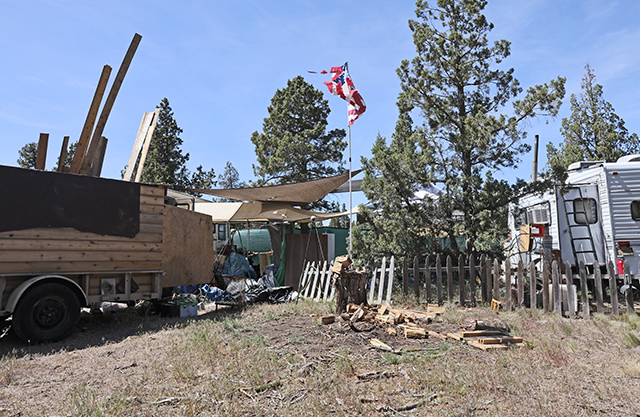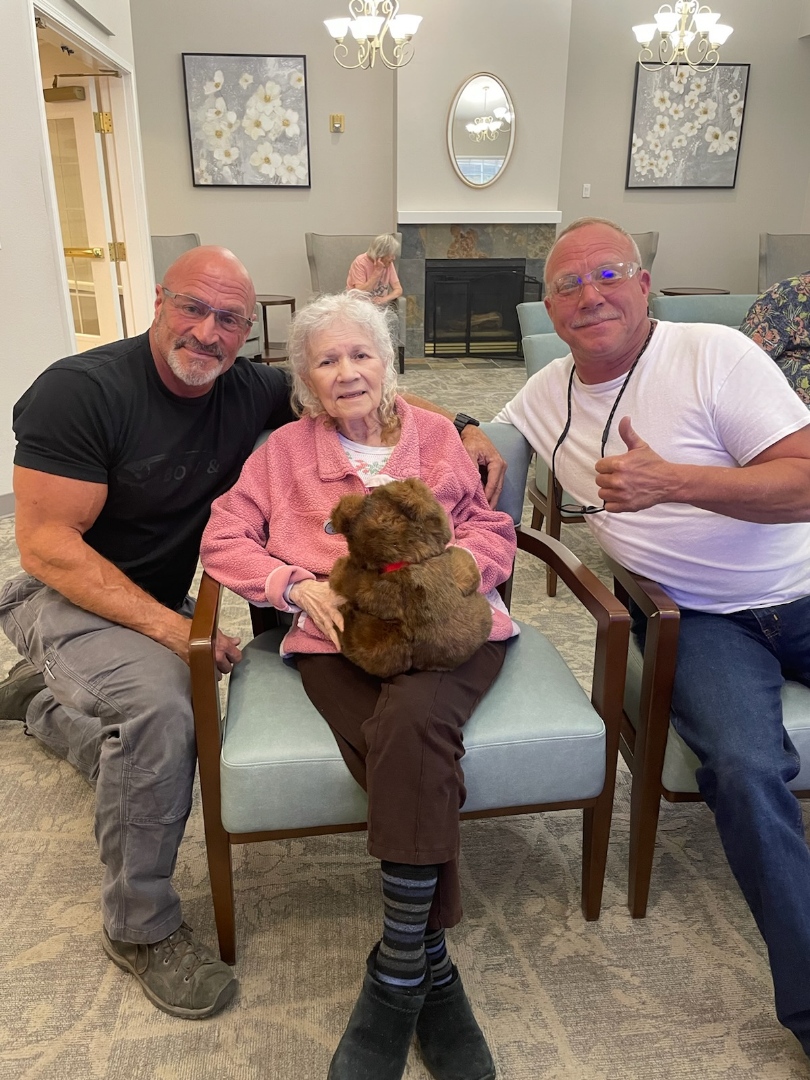Conquering the closet
Published 12:00 am Tuesday, May 27, 2014

- Tony Cenicola / New York Times News ServiceA collection of items that can help with avoiding clutter. While a closet-organization system is worth considering and easy to install, you can make major progress and spend far less with small changes that make vast improvements.
On the household to-do list my wife and I update whenever we’re orbiting Neptune in our hovercraft, “organize closets” is right up there with “hand-tune our unused piano” and “sort DVD collection by Rotten Tomato rating.” But when we recently had friends over for dinner and I couldn’t fit their coats into the entry hall closet, I figured I had to do something.
This particular closet was stuffed with 26 coats, 28 pairs of shoes, a dozen hats and multiple gloves, two old lamps and a pair of empty coat racks we keep there for irony.
My task: find a way to make this closet useful without resorting to a built-in organization system that might cost more than $1,000. For help, I called on three people with personal-organization consultancies: Laura Leist, of Eliminate Chaos, in Seattle; Barry Izsak, of Arranging It All, in Austin, Texas; and Ashley Murphy, of Neat Method, based in San Francisco.
While a closet-organization system is worth considering and easy to install, they said, you can spend far less and still make vast improvements.
“A lot of times, people think they don’t have enough closet space or they think they need a new closet system, when the fact is they just need to organize it better,” said Izsak, who is immediate past president of the National Association of Professional Organizers.
Carve out space first
If one or two closets are especially bad, Murphy said, don’t start with them. You may discover there is nowhere else to put the items you’ve jammed into the problem area, or you may simply trade one problem closet for another. Instead, take a close look at less cluttered or less important closets or storage areas. If your hall closet contains sports equipment or old coats (or, perhaps, old lamps), carve out space elsewhere for this stuff so you can create useful real estate where you need it most.
Of course, since I pay little attention to what my family members are wearing as they sprint out the door, it was hard to know which pieces of clothing were in daily use. Izsak suggested turning all the hangers backward, so the open ends faced the door, and waiting a week or two. Then check which ones haven’t been moved, he said, and you’ll know what wasn’t used; put those items aside to discard.
The next step is finding somewhere else to put the things you want to keep. We were in trouble on this front, since the other closets in our house were packed, too. My advisers suggested buying some accessories and hardware for our closets.
The simplest way to free up space, Izsak said, is with skinny hangers — and by that, he didn’t mean the old-school wire ones. Products like Huggable hangers ($10 for set of 10) are roughly a quarter of an inch thick yet strong enough to hold coats you would put on fat plastic hangers.
“With these, you can get three garments into a space where you used to have just one,” he said.
Another benefit, Murphy noted, is that “if all you do is change your hangers so they all match, you’d think your closet is more organized.”
Products to consider
Big-box retailers like the Container Store brim with products that will help you make better use of the space you have. Izsak recommended a closet rod like the Dublet from Umbra ($20), which gives you two tiers for hanging.
A double-tiered hanging rod allows you to consolidate clothes, but the downside, Murphy said, is that longer garments may drag on the floor. I tried one on a standard-height closet rod (the two-tiered rod hangs from the standard rod, with the second one hanging as much as 28 inches lower), and while my 12-year-old son’s shirts didn’t hit the floor, mine did.
My advisers also suggested looking into storage items that use the surface of the closet door. One option is the Hinge-It Clutter Buster ($30), which attaches to the door hinges and includes four rods for hanging garments or towels.
Back-of-the-door racks are a good choice for shoes, but only if you can close the door with the rack filled. For that reason, the PerfectCurve flip-flop rack ($10) found a place in our hall closet rather than the clothes closet.
An under-bed slide-out tray seemed like the perfect way to store dress shoes my wife only occasionally wears. I tried one (the sliding underbed shoe organizer, $30 at the Container Store), but our bed’s unusually low clearance of 5 inches thwarted that idea.
A shoe platform for the closet worked better. I tried the two-tier adjustable shoe rack ($18 at the Container Store), which extends to a width of 44 inches.
Again, Murphy was not a fan.
“The ones I’ve tried are just not well made,” she said.
Mine felt wobbly when it extended beyond 36 inches, but at shorter lengths it seemed sturdy enough.
For storing shoes, Murphy told me, she prefers bins or baskets: “For hall closets, I’d use the entire floor space and buy a basket for every family member, or put kids’ shoes in one and the parents’ shoes in another.”
My wife and I didn’t love the idea of rummaging on the floor for shoes, so we chose a hybrid solution: a hanging canvas shoe bag for us and a shortened (and therefore sturdy enough) shoe rack for the rest of the family.
But bins worked well on the closet’s two shelves. I tried a new product, Clever Crates, which are collapsible baskets. The 33.8-quart size ($10 at Home Depot) is big enough for a bunch of shoes or winter items, while the 16.9-quart-size ($8) is good for hats or scarves. I like this idea because our unused crates always attract junk. These won’t.
Our hall closet was now more spacious, but the two-shelf setup at the top was a stretch for my family. And now that we’ve put away our cold-weather jackets and unused coats, the closet had a lot of wasted space at knee level. So as much as I wanted to avoid installing a closet system, it seemed the only alternative.
DIY systems
My panelists were unanimously enthusiastic about do-it-yourself closet organization systems — in particular, the Elfa system from the Container Store. These systems, they told me, are easy to install and equally easy to adjust according to seasonal needs.
That all sounded great, except that I live in one of the roughly 25 states without a Container Store. For similarly disenfranchised people, my experts said, the company’s website offers useful tools for customizing a system.
I tried it and I agree. I browsed many samples online and then called a Container Store saleswoman with the measurements of my closet and a rough inventory of items we want to keep there, and she guided me to a $550 Elfa system in the most inexpensive finish. (My closet is 91 by 23 by 53 inches, and I chose wire-mesh components without wood-veneer fronts. The more expensive Elfa systems for walk-in closets, by contrast, cost around $3,000.)
My system includes slide-out shelves from the floor to hip level for shoes and a single shelf up top. The hanger bar sits 12 inches higher than my old one, so there’s far more space beneath the jackets now, and the shelves can be repositioned if we need more space for big coats in the winter.
As a do-it-yourself project, it was one of the easier jobs I’ve tackled. I cleared the existing hardware and shelves in 15 minutes, drilled six holes for wall anchors and screwed in the horizontal bracket that holds the other components. The printed installation directions were slightly vague, but two quick calls to the company helped. The job took me four hours, start to finish.
Was it worth it? For my big family and my space-constrained house, yes. We could have gotten by with the various space-saving accessories, but I suspect they would have broken or gone unused after a year or two. For another $300 or so, the installed system offers a more permanent fix, and when we eventually sell the place it will be a bonus.
In the meantime, I’ll be turning my attention to the piano and the DVD collection.






